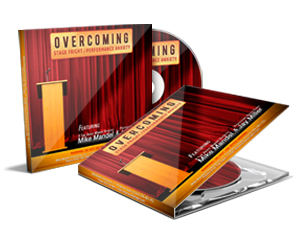Preparing an Effective Presentation
Strategies to Enhance Your Speaking Skills
Whenever someone asks for tips on presenting or public speaking, my first impulse is to say, “Prepare, prepare, prepare, prepare.” Many of the problems speakers encounter can be traced back to a lack of preparation. In fact, almost every speaker that walks into my office for coaching walks out with the realization that they weren’t nearly as prepared as they thought they were.
Having a script, an outline or a fancy slide deck does not make you prepared. Preparation goes far beyond content creation. Once your content is ready you might be halfway there—because, knowing your material is not the same thing as delivering the material. Those are two separate skill sets. You can know the material like the back of your hand and still hit a wall when it comes to communicating it clearly and effectively.
Format your notes so they actually help you. Speakers often try presenting from pages or slides that have large sections of small type and not enough white space. When the text is too dense on the page it’s very easy to lose your place and you’ll tend to keep your eyes glued to your notes. Use at least 14-point fonts and place small blocks of double-spaced text at the top, middle and bottom of the page. The rest will be white space. Your notes should support you, not distract you. And less is more.
Rehearse the speech. To be fully prepared, you must practice doing exactly what you’ll be doing when you actually give the speech. That means standing up and talking through your material, out loud. Reading over your notes is not rehearsal. If you make a video of your rehearsal, it gets even better. You will immediately discover what’s working well and what needs your attention. In a very short time, you’ll become your own coach.
Master the beginning and end. The opening and closing could arguably be the most important parts of your presentation, but they often get the least amount of preparation. Craft a compelling opening. Learn it so well you won’t need notes. Then use that freedom to engage your listeners and establish an immediate connection. Create a conclusion that drives home your main points and inspires the listeners to take action. What do they need to remember? What do they need to do? How do you want them to feel? If there’s any moment when you must speak with persuasiveness, clarity and conviction, this is it.
Know what you’re practicing. Every time you have an opportunity to speak, pick one small skill you can practice while you’re presenting. It should be something easy and not too distracting, such as, “I’m going to stand on both feet,” or, “I’m going to smile more.” It’s impossible to focus on everything, so make a point of focusing on one thing. Choosing your task will help you stay present, feel in control and be realistic in your expectations. It also will guarantee that you keep improving.
Public speaking isn’t rocket science. The skills required are pretty straightforward. The challenge is learning to do what is ordinary in out-of-the-ordinary situations. Talking is ordinary. Speaking alone in front of fifty people is out-of-the-ordinary. It’s no time to cross your fingers and hope for the best, nor to assume it’s as easy as it looks. When you’ve prepared thoroughly—and you know you’re prepared—you’ll approach the podium with increased strength, quiet confidence and a realistic expectation of success.
 The Sound of Success
The Sound of SuccessEnroll in this FREE video mini course and discover a powerfully attractive voice.
 Your Confident Voice
Your Confident VoiceThis 145-minute mp3 download is a complete speaking voice course. The simple but amazingly effective program is on sale this month!
 Overcoming Stage Fright
and
Overcoming Stage Fright
andPerformance Anxiety
On this mp3 download, Jay Miller teams up with six-time award-winning hypnotist Dr. Mike Mandel to deliver the most comprehensive program available for reducing or eliminating stage fright.